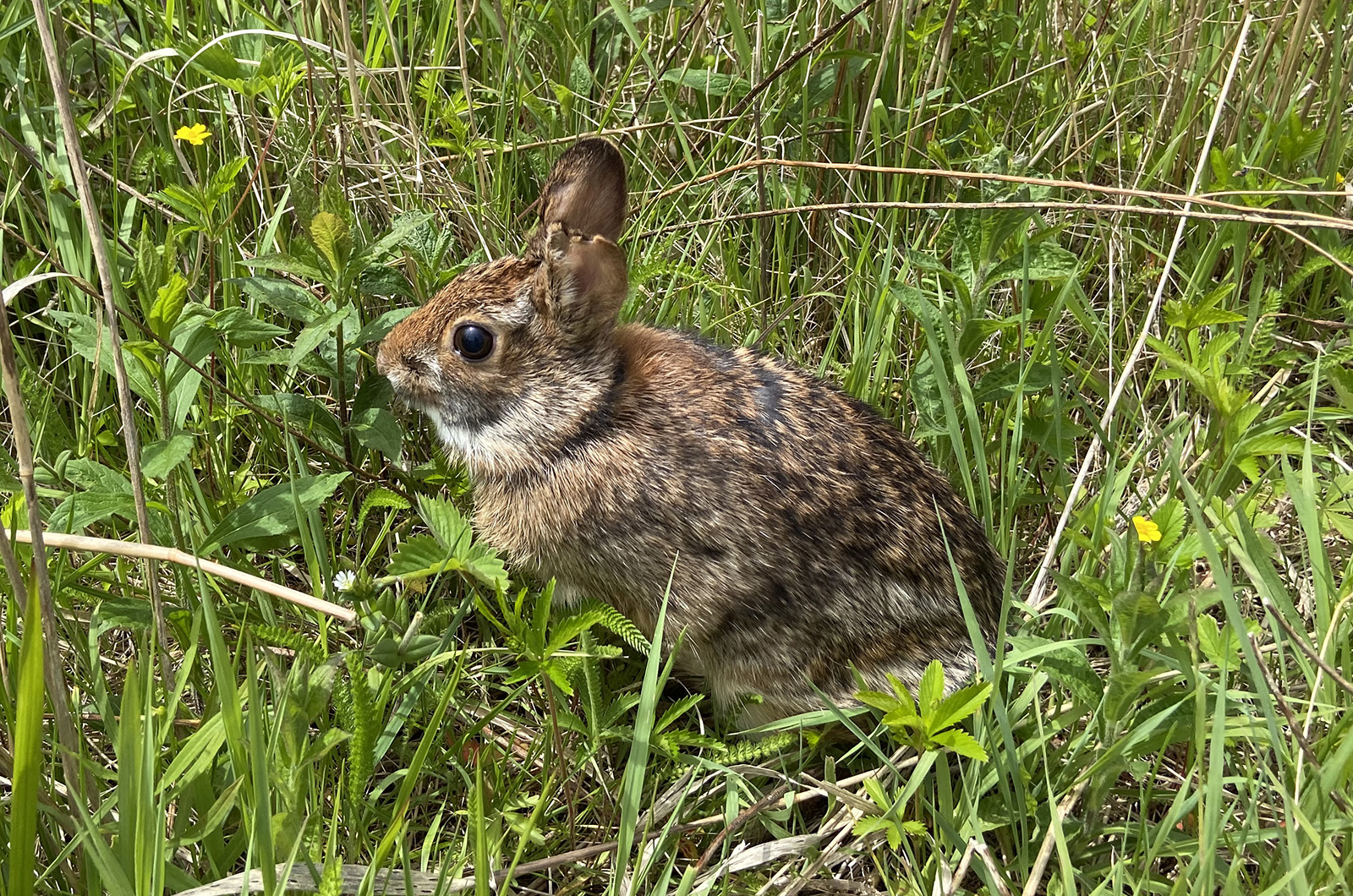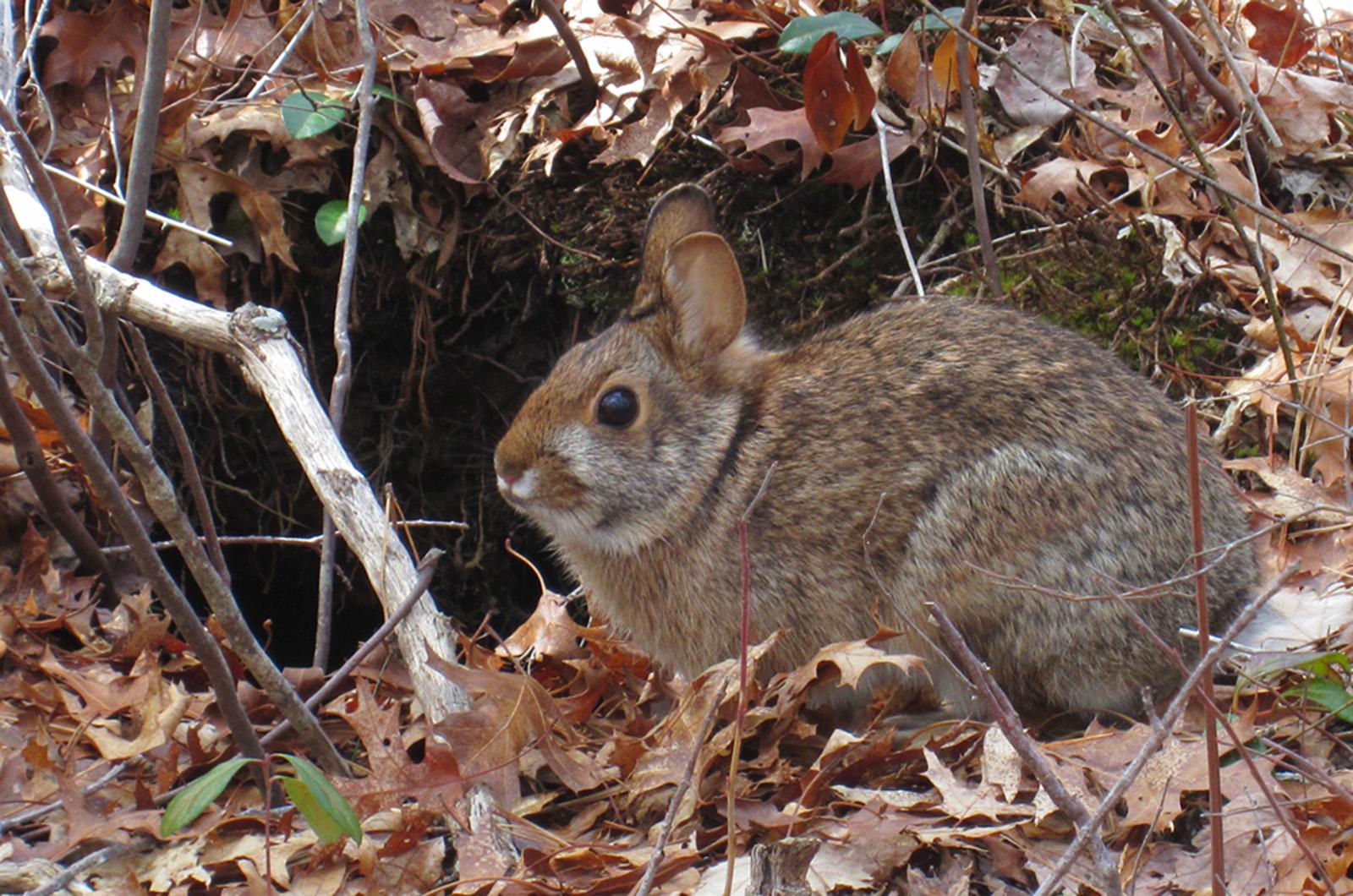It started with about a dozen rabbits, dropped off on a remote island that was once used by the military for target practice.
Four years on, it’s a bunny paradise.
Federal wildlife officials say the running experiment to establish a New England cottontail colony on Noman’s Land to bolster the struggling species has been a resounding success. After initially releasing the 13 rabbits in 2019, about 400 now roam the small island off Aquinnah.
“I was really surprised how fast the population grew,’ said Eileen McGourty, a biologist with the U.S. Fish and Wildlife Service.
The service hatched the plan in 2018 to reinvigorate the cottontail population as the species’ habitat was dwindling across New England.
Though they look like eastern cottontails that can be found in Vineyard yards, the New England cottontail is the only native cottontail in the region. It loves dense thickets of young forests, shrublands and coastal barrens. In the past several decades, those types of habitats have been destroyed by development, leaving only mature forests behind. One study found the rabbit’s range had shrunk by nearly 90 per cent since 1960.

In the search for a place to help regrow the rabbit’s numbers, officials found an unlikely oasis: a speck of land south of the Vineyard that was once used by the military in World War II.
From the 1920s to the 1940s, Noman’s Land was a private game reserve. In 1943, the U.S. Navy took over the reserve, using the island for aerial bombardment. The Navy maintained ownership of the island until it gave it to the wildlife service in 1998 to be run as a bird sanctuary.
Because of the risk of the people stumbling across unexploded ordnances from its military days, and its relatively natural habitat, the island is closed to the public. But those same factors made it an ideal location for a wildlife refuge.
With rabbits unlikely to trigger latent bombs and no other mammalian predators on the island, the service decided to release 13 rabbits in 2019, eight in 2020 and five in 2021. The cottontail, which isn’t technically endangered but struggling, now seems to be thriving on the uninhabited island, said Anthony Tur, an at-risk species coordinator with the service.
The survival rate for the first wave of rabbits is 92 per cent. Some carcasses have shown up, likely victims of hawks or other types of birds.
If the population continues to grow to about 500 rabbits – the amount needed for a self-sustaining population – scientists will start to bring some back across the water to help shore up mainland populations.
“We thought maybe taking them out there would create a sizable population that would contribute to the conservation of the species,” Mr. Tur said.

The fish and wildlife service plans to do a five-year check-up on the cottontails in the coming summer or fall.
Data from rabbit tracker collars, game cameras and pellet studies, shows the species has spread throughout the 628-acre island.
“We have rabbits dispersed throughout the entire island,” Ms. McGourty said. “I can hear the rabbits as I walk through the island, I can hear them in the shrub.”
The island’s vegetation also seems to be able to support the growing number of rabbits. Initial surveys of Noman’s bayberries, blackberries, sumac and other fare all appear to be holding up, though scientists do plan to monitor the greenery to ensure the island can sustain the species.
Similar types of relocations have happened in the past. In 1925, 79 cottontails were released on Penikese after hunting decimated some portions of the populations. Rabbits can still be found to this day on the former Gosnold leper colony, though they often go unseen for two to three years at a time.
The work on Noman’s is a sort of insurance policy for the mainland, where the rabbit is an important part of the food web for various predators. If the Noman’s rabbit numbers continue to climb, Mr. Tur expects the fish and wildlife service will soon relocate some to other parts of New Hampshire, Maine and Rhode Island.
“We are hoping Noman’s will serve as a population to support introductions to other sites on the mainland,” he said.






Comments
Comment policy »